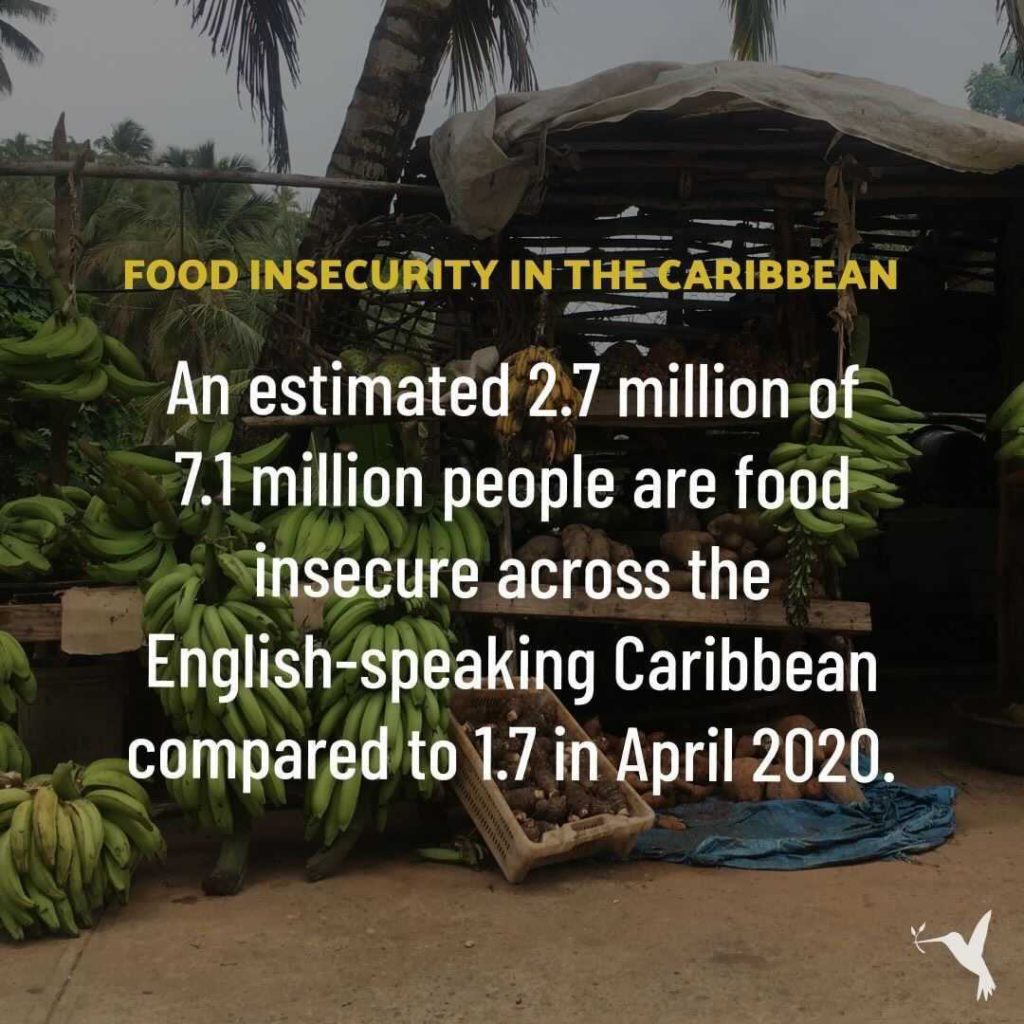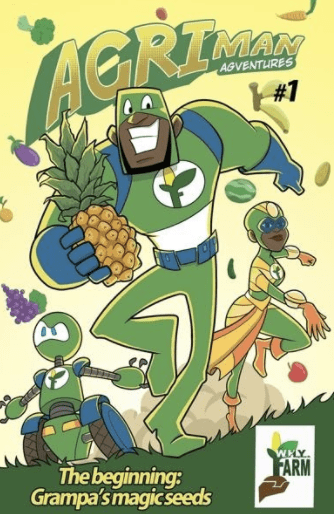Reviving Agriculture in the CARICOM Region
Originally published by Global Alliance for a Sustainable Planet (GASP) on July 6, 2021.
By reimagining value chains, employing young adult populations, and instituting resilient farming practices, the Caribbean Community, or CARICOM, region is poised for a paradigm shift in the agricultural sector. This shift will revive farmers’ livelihoods, address climate change, and develop sustainable food systems across the Caribbean.
In 2020, CARICOM revealed its “25 in 5” plan to reduce the region’s $5 billion food import bill by 25% over the next five years. But, as the attention turns to domestic agriculture systems, two existential challenges become apparent: climate change and food insecurity.

Challenges in Caribbean Food Systems
Until the 1960s, agriculture was the economic driver for the Caribbean and its population of 44.4 million people. In the last five decades, however, the industry has been constantly challenged. The out-migration of farmers to the tourism industry, inadequate skills among new farmers, trade barriers and price volatility create instability. Additionally, there are natural disasters, overexploitation of natural resources, and multiple other factors at play.
Climate change and COVID-19 have further exposed the fragility of existing food systems. Almost 80% of food is imported to the countries in this region. When ports close—be it from a storm or a pandemic—countries are cut off from their primary food supply.
The agri-food sector is tightly linked to tourism in the Caribbean. Tourism in Caribbean countries accounts for 50% of the total GDP contribution of several member states, and some even more. However, today the linkages between the two sectors suffer from poor infrastructure, information asymmetry, underdeveloped value-chains, and cash-flow constraints.
The changing climate and increasing droughts, floods, and sea-level rise are placing growing pressure on the environmental carrying capacity. In addition, changes in temperature and humidity have increased incidence of invasive crops and pests.
According to research published in Nature Climate Change – which looked at data from 1961 to 2020 – global agricultural productivity has declined by about 21% in the last 60-years because of climate change. The decrease was most pronounced in Africa (30%) and Latin America and the Caribbean (26%).
A Way Forward
Technical policies and solutions such as stimulating Foreign Direct Investment and reducing inter-regional trade barriers are critical in combating these challenges. And they must be partnered with improved climate investment.
However, their success equally lies at the farm level. Agriculture needs a revival, to make farming a sought-after profession by the youth. The current state of Caribbean smallholder farming—inadequate compensation, a dwindling farmer population, and an undignified public perception—is entrenched in the region’s history of colonialism and slavery. But, the pressing threat of climate change and efforts to reduce the food import bill make the region primed for change.
What Are the Drivers of Change?
Keith Agoada, CEO of Producers Market, shared their approach with us and why there is great potential for an agricultural systems transformation right now. He describes digital technology and youth as the drivers of change.
“We are trying to shift the culture to make farming enticing, profitable, and engaged with local communities—there needs to be a whole cultural shift, and I think digital technology is at the center of that. You have all the young people on smartphones, Instagram, Facebook, so this opportunity to connect markets, make agriculture attractive and digitally integrated is this major opportunity and ultimately supporting these existing small farmers and making it more profitable, inspiring new farmers to come in as well.”
Transparency and storytelling are at the heart of Producers Market’s approach to disrupting existing agricultural value chains. Through aggregated digital marketing, digitized transactions, and supply chain traceability, their platform creates market linkages. The idea is to connect farmers and producers directly to markets, eliminating middleman and returning greater profits to the farmers. Farmers feel empowered to make their own choices through supply chain optionality. Farmers will have a consistent and reliable source of income to support their families. Agoada added,
“Contrary to popular belief, improving farmer livelihoods does not have to raise costs at the consumer end. High-quality products backed by story-driven marketing—which consumers are more likely to buy into and support—can reach price parity with existing organic and fair-trade products.”
Agoada believes that the youth are an untapped sector. Young people can facilitate the digitalization of farmers’ business. His vision of an “agripreneur” network engages many tech-literate unemployed young people, making the agricultural industry a sought-after profession.
Agricultural Rebranding to Engage Young People
Alpha Sennon’s WHYFARM (We Help You-th Farm) is another initiative that addresses youth unemployment and agricultural under-employment. The creative trailblazer is reinventing the language of agriculture to attract young people. With words like agricreativity, agricool, agventure, and ricesponsible and tools like comics, poetry, and drama, Alpha Sennon has introduced AGRIman and his sidekick, PhotosyntheSista. These are the world’s first Food and Nutrition superheros.

In collaboration with the Agriculture Alliance of the Caribbean (AACARI), Producers Market is developing a pilot project with 500 farmers in the Bahamas. The goal is to scale the market linkage concept and support small to medium scale agricultural enterprises.
Errington Thompson, President of AACARI, shared a current undertaking in the Bahamas, “Mentoring Through Agriculture.”
“In this pilot, being launched with young people in disadvantaged situations and incarcerated youth, we take a four-pronged approach. We want to utilize our experience in agriculture to help them to develop a farm. We want to give them skills, teach them how to make advances in agriculture, and pay them to provide them with a start. Mentors will guide them and teach them various life skills, so they are set up for success in their futures, be it agriculture or elsewhere”.
Youth Empowerment in Agriculture
Programs like these will be the catalyst for youth empowerment and a culture shift around agriculture. Kelly Witkowski leads the Inter-American Institute for Cooperation on Agriculture (IICA)’s Climate Change and Natural Resources Program. She says, “the agriculture sector needs to play a stronger role in the national and regional climate response processes. Involving youth is critical for this.”
Supported by the Green Climate Fund and with leadership from IICA, nine CARICOM countries have recently come together to implement a readiness project. Together, they will build a strengthened foundation for a more climate-responsive agriculture sector in the region. The project will develop vocational standards for climate-smart agriculture and increase capacity in the region’s youth. It will also work with data and information to inform investment and analyze the barriers limiting private investment in agriculture.
Pairing this model with a shift in sustainable farming practices, will tackle the dual crisis of climate change and food insecurity. Climate change is causing more frequenct and more intense droughts in the region, which leads to decreased yields andf heat stress in livestock. Chaney St. Martin, a water and soil specialist at IICA, emphasized the need for a context specific approach.
“Each country has different contexts and needs. As much as possible, shifts to sustainable farming practices and systems should be informed by evidence-based research. This research focuses not only on soil and water as production inputs, but also natural capital for responding to climate change. Focus must be placed on sustainable land and soil management strategies. Improving soil health through the incorporation of organic matter, soil fertility management and biodiversity conservation, as well as implementing climate-resilient water security systems are critical steps.”
The CARICOM region is large and diverse. Carribean countries have similarities and differences too of course. A wide range of solutions must be implemented to address the similar challenges and unique needs across the region. Fortunately, some of these creative and innovative people are already on it.
Stay current by signing up for our newsletter here.



